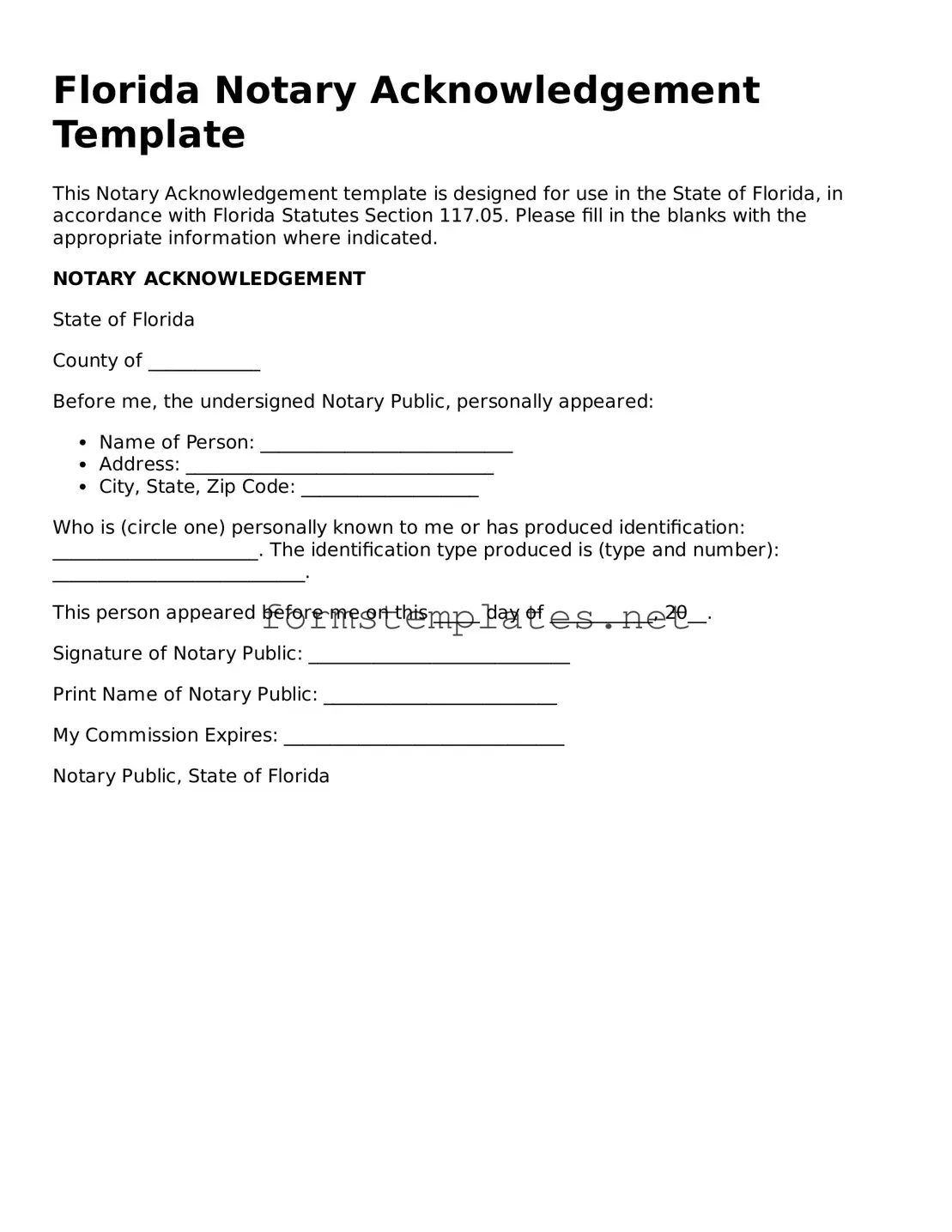Attorney-Approved Florida Notary Acknowledgement Template
The Florida Notary Acknowledgement form is a legal document that confirms a person's signature on a document was made voluntarily and with awareness of its content. This form serves an important role in various legal transactions, ensuring that signatures are authentic and binding. Understanding its purpose and requirements can help individuals navigate the notarization process effectively.
Open Editor Now
